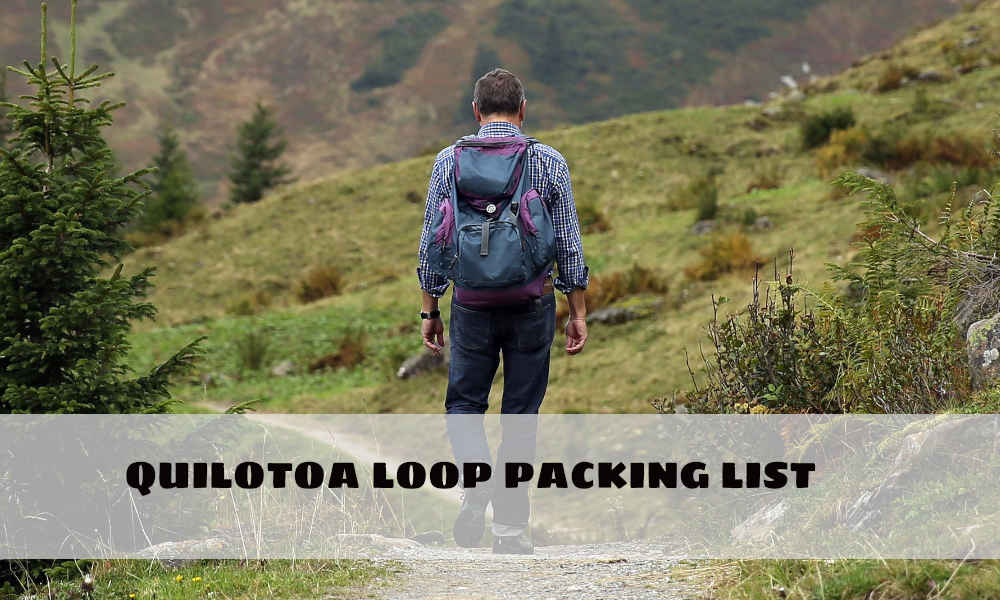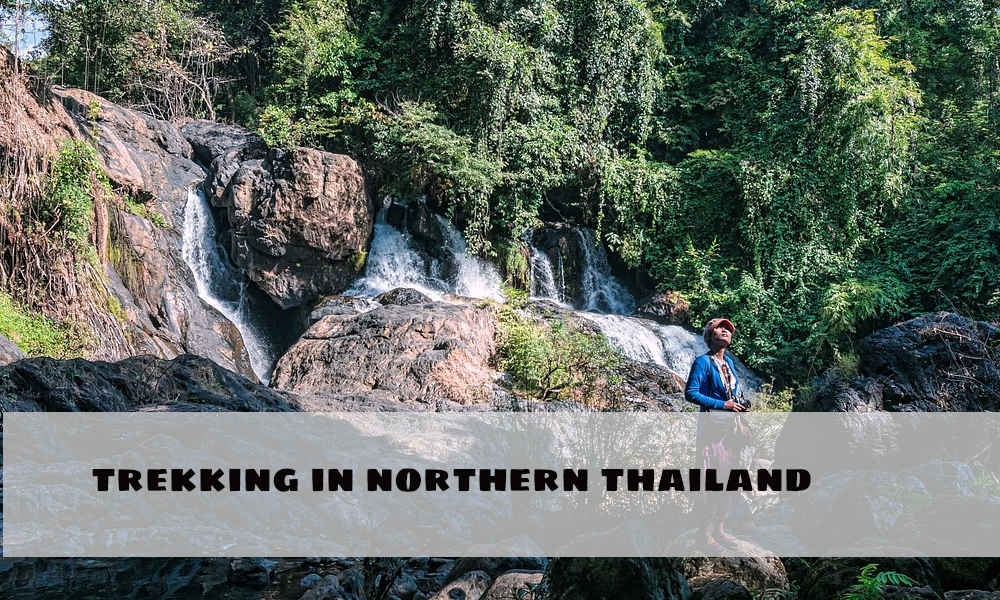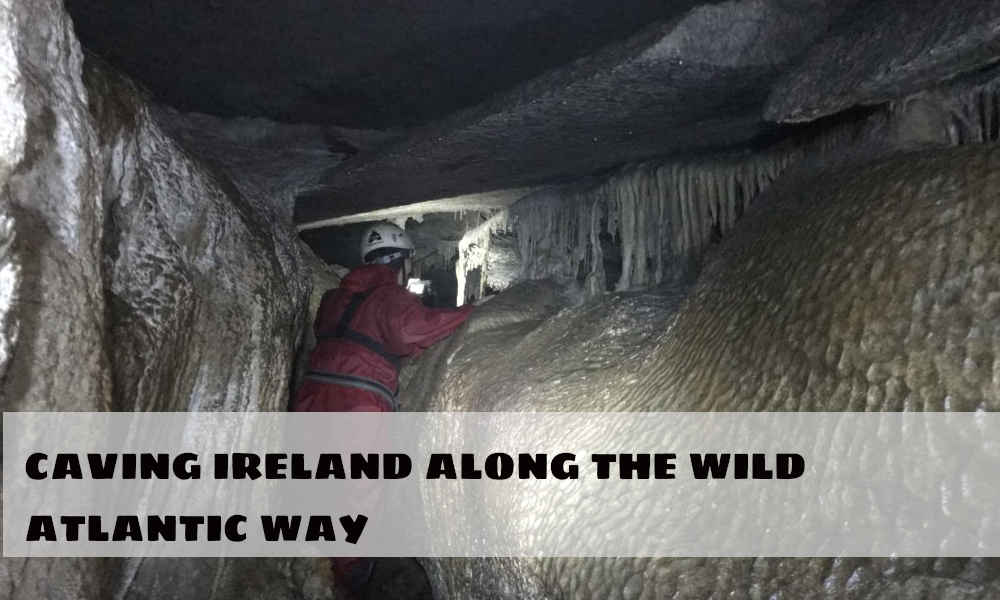The 3-day Quilotoa loop trek is a short yet powerful journey that weaves through the spine of the Andean Mountain range in Ecuador. It is undoubtedly one of the best ways to appreciate the undulating beauty of the highlands, experience rural landscapes, see simple towns, and take on a physical challenge. This is a great route for trekkers of all levels– from beginners with great attitudes to more experienced folks who have been on world-class treks.
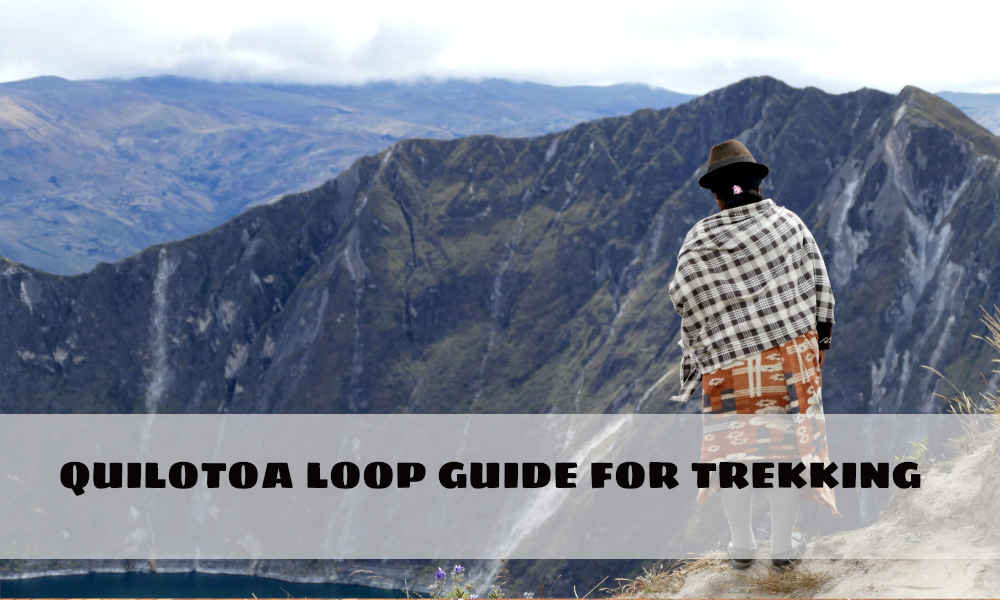
There is something soulfully satisfying about taking off a backpack at the end of a trekking day, stretching your legs in a hammock, and eating a hearty home-cooked meal. It’s a special way to connect with nature and appreciate the varying landscapes that each country has to offer. We sincerely hope this is something everyone can experience for themselves. In this guide, we’ll take you through everything you will need to know to plan your own self-guided Quilotoa loop trek in Ecuador, and our Quilotoa Loop Packing List will be handy when you travel.
Thoughts on self-guiding or getting a Quilotoa loop tour guide
There are always pros and cons of self-guiding versus going with a tour company. A tour company can be great if you have limited time to plan, need extra help carrying your belongings, would like explanations on points of interest or natural surroundings, or want to guarantee you’ll be traveling with a group. There are a lot of factors to consider before making this decision.
The Quilotoa loop is a relatively short trek and is simple enough to self-guide– even if you are a first-timer. In order to do so, you will be taking on a small (yet enjoyable) challenge of planning logistics, navigation, and carrying your own supplies. Another perk of self-guiding anything is that you’ll save money and have the autonomy to choose where you stay. We spent only $100 for transportation, lodging, and supplies for this 3-day Quilotoa loop trek.
Cost for the Quilotoa Loop trek for one person
| Category | Detail | Amount |
| Bus | Ride from Quito to Latacunga | $2.15 |
| Food | Supermarket snacks and lunch | $3.25 |
| Taxi | Private car ride from Latacunga to Sigchos | $25.00 |
| Lodging | Hostal Llulu Llama, half board, private twin room | $24.00 |
| Lodging | Black Sheep Inn, full board, dormitory | $35.75 |
| Food | Celebratory beer and chicken soup in Quilotoa | $5.50 |
| Bus | Ride from Quilotoa to Zumbahua | $1.00 |
| Bus | Ride from Zumbahua to Latacunga | $1.50 |
| Taxi | Latacunga bus station to Hotel | $1.50 |
| Total | $99.65 |
( expense depends on several factors such as seasonal, inflation, date of visit, holiday, etc.)
One of the challenges when planning a Quilotoa loop trek is the limited availability of trail information. Many people have reported getting lost or finding the maps to be unreliable. Avoiding getting lost is crucial, and it is important to gather as much information as possible beforehand, including taking every map available at each hostel and speaking with locals along the way. This guide includes helpful notes gathered from previous research, as well as new insights collected during the trek. It is an invaluable resource for anyone planning a self-guided Quilotoa loop trek in Ecuador, and we are excited to share it with you!
A word of advice: you’ll want to download offline maps (see instructions in point #7 on downloading offline Google Maps) beforehand, and if possible, have a printed guide handy to refer to every step of the way (or save the screenshot on your phone). The Quilotoa loop trail is safe, with the exception of some territorial dogs, which may growl if you get too close to the property line.
Which direction should I choose for the trek?
You can choose to go the traditional (beginning in Sigchos) or the untraditional route (beginning in Quilotoa). While some may argue that going the untraditional route is easier (with fewer ascents), the trek will have difficult moments in either direction. We recommend going the traditional route to end with a spectacular finish at the Quilotoa crater lake. Our guide is written for the traditional route, which goes from Sigchos to Insilivi, then Chugchilan, and ends in Quilotoa.
What is the total distance for the Quilotoa Loop trek?
The first day of the Quilotoa loop from Sigchos to Insilivi is 14 kilometers (km) which are fairly flat with an ascending burst towards the end. The second day from Insilivi to Chugchilan is more demanding than the first due to undulations with an overall distance of 12.4km. The final day from Chugchilan to Quilotoa is 10.3km, which is the most difficult yet rewarding day, with several ascents to yield a drool-worthy view of the caldera. The total distance for the 3-day trek is 36.7km, which is 22.8 miles.
Where to stay on the Quilotoa Loop trek
The Quilotoa loop trek hasn’t become a huge sensation (yet), so it is relatively easy to do walk-up reservations. We personally prefer to reserve in advance for peace of mind, but that is up to you. The town of Insilivi is quaint and has only two places to stay– Hostal Llulu Lllama and Hostal Taita Cristobal. Currently, the best way to reserve in advance is to email them.
Hostal Llulu Llama is infamous for its relaxing environment and good meals, so you may want to make a reservation if your heart is set on staying there. Chugchilan has many more options, including the creative ecolodge we stayed at called Black Sheep Inn, as well as Hostal El Vaquero, and Hostal Cloud Forest to name a few.
If you decide to spend an evening in Quilotoa after your trek, there are also numerous accommodation options available. Otherwise, you can return to your lodging in Latacunga by taking a bus that runs from Quilotoa to Latacunga. Wifi is available at certain locations in Chugchilan and Quilotoa but may be harder to find in Insilivi.
Quilotoa loop weather
During our three trekking days, the sky would quickly change from moody clouds to piercing sunshine, flip over to light rain, and end with brisk evenings. In Ecuador, the dry “winter” season typically occurs from June to September, and the wet “summer” season runs from October to May. It’s best to prepare for all elements by bringing multiple layers, sun protection, and always having a rain jacket or poncho handy. You will not encounter any snow.
Staying well-fed and hydrated during the trek
On the first day of your trek, you’ll want to set off with your meal and water supply. Latacunga has a large mercado or supermarket conveniently located next to the main bus terminal. This is a great place to buy your lunch fixings, such as nuts, granola bars, or ingredients to make peanut butter and jelly sandwiches (such as we did). Depending on how much water you typically drink, it is a safe bet to bring 1.5 to 2 liters with you, as there are very few opportunities to buy more supplies along the route.
Most of the accommodations along the Quilotoa loop offer half-board, which means dinner and breakfast are included in your stay (the food at Black Sheep Inn is phenomenal). Some of the lodges will also include or sell bagged lunches. If you want to save money, it is best to buy your supplies beforehand.
.
What should I pack for the Quilotoa loop tour?
You don’t need anything special besides your legs, positive energy, and sense of adventure for this trek (although some specific items will ensure your experience is a lot more comfortable). We got a lot of use out of our trekking poles on days 2 and 3 because they had some serious incline and muddy landslide areas.
The most important item you’ll want to have is a good pair of athletic shoes to help mitigate blisters and twisted ankles. Ultimately, you will want to carry as little weight as possible to make the journey more enjoyable. You will also want to bring enough cash to cover all lodging and food, as there are no ATMs. We’ve written up a comprehensive Quilotoa loop packing list which will help get you prepared for this epic experience.
Is altitude sickness a factor?
Quilotoa’s elevation is marked at 12,841′, which is 3,500′ more than Quito (the second highest capital in the world just underneath La Paz, Bolivia). There’s a chance you may experience altitude sickness depending on where you are coming from. If you are traveling from the coast, such as Guayaquil where the elevation is 13′, you will want to give yourself several days of acclimatization in the highlands before setting off on the trek.
Another option is to bring altitude sickness medicine which is available by prescription. We chose to take altitude sickness medicine because we traveled from California to Ecuador the day before we started the trek and didn’t want to take the risk. You should be fine if you are traveling from Quito, as the altitude gain on days 1 and 2 of the trek is fairly modest.
Situate yourself in Sigchos or Latacunga the day before you begin the trek (traditional route)
The Quilotoa loop trailhead is located in the small town of Sigchos. It is possible to stay there overnight, but there are limited options for lodging and restaurants. Expect a very quiet evening if you do stay in Sigchos. Most people choose to stay in the city of Latacunga, which we recommend doing. You should be able to store your luggage at your lodging in Latacunga (some places charge a daily fee, such as Hostal Tiana), move your essentials over to a backpack, and trek with only the items you’ll need. Latacunga is an enjoyable place with several lovely churches, museums, and a small outdoor marketplace, and it easily connects via bus to other nearby cities (including Quito).
How to get from Latacunga to Sigchos
You can take a 2-hour ride on the public bus (departure at the main Latacunga bus station) to get from Latacunga to Sigchos for $2.00 or so. If you ask politely, Hostal Tiana has a copy of the trek instructions and the bus departure timetable that they can provide to you. Most days, the bus departs at 9:30 am, which is an excellent time to set off for your first day of the trek.
If you happen to be traveling on a Sunday, keep in mind the timetable may be drastically different. We were unpleasantly surprised to learn there was no 9:30 am departure that day and ended up making the decision to take a $50.00 taxi ride all the way to Sigchos instead of waiting for the next departure at 11:30 am.
Note: In the event of an injury or in the off-chance that you do not want to continue the trek, there are buses available between Chugchilan and most cities, as well as Insilivi and Latacunga. Your hostel should be able to help arrange rides if needed.
Quilotoa loop Itinerary
The day before the trek: Travel from Quito to Latacunga by public bus (they frequently leave every 20 to 30 minutes from Quito’s Quitumbe station) which costs $2.15 and takes 90 minutes. Spend the evening in Latacunga and leave your luggage at Hotel Endamo.
Quilotoa loop day 1: 90-minute taxi ride from Latacunga to Sigchos. Trek from Sigchos to Insilivi; overnight at Llulu Llama.
Quilotoa loop day 2: Trek from Insilivi to Chugchilan; overnight at Black Sheep Inn.
Quilotoa loop day 3: Trek from Chugchilan to Quilotoa. Take a 20-minute public bus ride from Quilotoa to Zumbahua, and take a 70-minute connecting bus ride from Zumbahua to Latacunga; overnight at Hotel Endamo.
Complete Guide for Traditional Quilotoa Loop Trek (beginning in Sigchos)
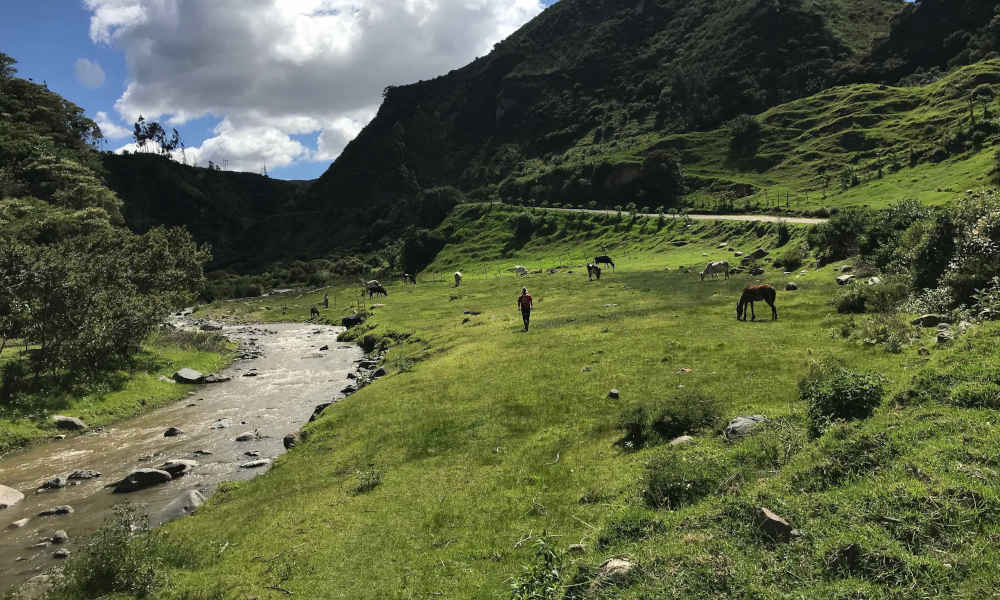
We recommend you use google maps for more accurate and up-to-date data.
Day 1: Sigchos to Insilivi // 14 km // 3 – 4 hours of active trekking time
Generally flat road conditions with one challenging ascent towards the end of the day. The route is marked with signposts and spray-painted colors.
- The trailhead can be challenging to find, as there is no trekking marker that is clearly visible in the town. First, you will want to identify a large sign that shows the direction for Chugchilan 25 km ahead) and Parroquia Insilivi (14 km to the left). This sign is located on the “open” edge of town. As Sichos is surrounded by hills on three sides, look for the only side that does not have a hill where the sign is located.
- Once you have found the large sign, walk left towards Insilivi where the paved road becomes dirt and descends. After a few minutes of walking on this road, you will see several signs clustered for Hostal Llulu llama, Hostal Taita Cristobal, and even one for Hostal Cloud Forest, pointing to the path on the right.
- Continue to follow the road, where you will pass a white church painted with red trim and two red crosses on top. Keep trekking, passing the first side path (unmarked) on the right until you see another trail on your right-hand side that is marked with a smaller cluster of signs for Hostal Llulu llama and Hostal Cloud Forest, where you will turn right. After 7-10 minutes on this path, you will need to look to your left for a small footpath in the grass that is unmarked. Some people have stacked a small pile of stones to indicate the path, but it is entirely easy to miss, so be vigilant. This small path descends into the valley and will eventually take you to a road.
- Upon reaching the road, turn right. You will continue down the road following a slight left-hand curve, then a right curve until you see another left-hand curve with a small path jutting off of it. The path has a barbed wire fence alongside it, and you can also confirm this is the correct path because, just a few steps into it, you will see a fence post (thin tree trunk) that has been spray-painted green, orange, and white.
- Continue along this path until you reach a road and turn right. Continue trekking for about 30 minutes with the river on your left-hand side until you reach two small homes; one with brown walls and the other (slightly smaller) with grey cinder block walls and a small white shack attached to it. Near these homes, you will also see a red and yellow trail post pointing to Insilivi.
- Take the small descending grassy footpath that’s located directly to the right of the two homes. This path will take you down to a river and a concrete bridge. **There’s a chance there may be a person standing at this intersection demanding some money to use the path (this happened to us). It does not cost any money to trek the Quilotoa trail, so politely refuse their request and keep on the path.
- Walk across the concrete bridge, turn right, and then just 20-30 meters; then you will see a footpath on the left marked with several spray-painted rocks along the way. This path will take you into a steep ascent up a muddy (depending on the season) path until you reach a dirt road, which you will turn left on.
- Follow the road for another 20-30 meters, where you should see a small intersection with several houses and farms. There will be a spray-painted marker indicating that you should turn left here (although if you go right, you’ll quickly realize you’re walking into someone’s farm).
- Continue on the path that is marked with red and yellow spray paint until you reach a small school with a basketball court and a white building with metal bars over the windows. Turn right at this intersection, and about 20 meters after this; you’ll see a small trail to your right with a concrete column that has been spray painted with the number 7, a llama, and a star. Take this trail to your right, and you will begin ascending with switchbacks.
- This ascent is the most challenging part of the day and can take anywhere between 40 minutes to an hour, depending on your trekking speed. The path is straightforward and marked with spray-painted rocks along the way. You will encounter two smaller paths shooting off on the right-hand side, but just ignore these and continue along the main route until you get to the top of the hill and reach a large road.
- Turn right onto the large road and pat yourself on the back. The hardest part of your first day is now over! Continue walking on the road for another 45 minutes until you reach the tiny town of Insilivi. As soon as you enter the town (easily identifiable by the large brick church straight ahead), take the first road on your right. If you walk up to the church doors, you’ve already gone too far. You will see Hostal Taita Cristobal at the T intersection (and Llulu Llama if you turn right at the intersection). The two accommodation choices are just steps away from each other.
Day 2: Insilivi to Chugchilan // 12.4 km // 4 – 6 hours of active trekking time
Steep descent the first part of the day, undulations, one challenging ascent, then the day ends with a walk on asphalt into the town of Chugchilan. The route is marked mostly with spray-painted colors and few signs.
- The trailhead begins adjacent to Hostal Llulu Llama’s kitchen. Descend down this path and then turn right onto the road after 20 meters. Keep descending until you begin to see a concrete bridge at the bottom of the valley on your left-hand side.
- Go across the concrete bridge and continue walking 200 meters, where you will see a trail on your right-hand side that is ascending. Take this path until you reach a dirt road, where you will turn right. Continue for 2km until you see a red and yellow trail sign pointing to Chugchilan where you will turn right. **It should take about 20 minutes from the time you cross the concrete bridge to the time it takes you to get to the Chugchilan sign.
- Continue trekking along this path for about 15 minutes until you get to an interesting section where white cliffs flank both sides, and the trail is wide and dusty. Continue walking through the “white cliff walls” for 5 minutes, and you will see a house and a red and yellow signpost directing you to turn right towards Chugchilan. Take that path which will be narrow, and begin to descend.
- The trail begins to reveal more adventurous sections with muddy terrain, narrow passageways, and also massive plants. After walking about 15 minutes along this path, you should see another red and yellow signpost directing you to Chugchilan. Continue this way until you reach the base of the mountain.
- At the mountain base, the path appears to fork in several directions. Simply go straight across the small muddy ditch (go off the trail to do this if needed), where you should see the path converge again. Walk several steps until you see another fork with marker indications (spray-painted trees) to go right. The correct path will descend slightly, while the incorrect path on the left will ascend.
- After 25-30 minutes of continuing along the trail, you will encounter a wooden gate. Pass through this gate and continue along the path where a large farm will be on your right-hand side. You’ll pass through another “gate” made of barbed wire (the wire has since been trampled and is on the ground, so it may not look like a real gate per say).
- Keep going on the trail for 1.1 km, where you will see a tall boulder (about 7 feet high) on your left-hand side. During the majority of this time, the Rio Toachi River will run on your right-hand side. Continue along the trail until you see a small grove of eucalyptus trees which you will walk through until you reach a log bridge that spans across the Rio Toachi River.
- The log bridge is highly noticeable, with multiple signs for Hostal Cloud Forest on it. Carefully cross the log bridge. Immediately after crossing, you should see a sign for Hostal Cloud Forest, which has been nailed to a tree. Follow the sign and take the path to your left towards Chugchilan. The Rio Toachi should now be situated on your left-hand side.
- Continue straight on the trail past the suspension bridge on your left (do not cross), and the path will begin a gradual ascent for the next kilometer. At this point, you will see a wooden shack with a small sign selling snacks and drinks on the outside of it. Turn left on the road in front of the store and head towards the small town of Itualo, which is easily recognizable by a beige and red church and cattle area next to it. As you come closer, you will also see other small buildings, stables, and a school.
- Walk past the church, and you will see a path leading up toward the mountain with a wooden sign for Hostal Cloud Forest and Chugchilan on your right-hand side. This trail will take you all the way up and over the mountain, making this ascent the most challenging of the day. The ascent will take anywhere between 35-45 minutes with a distance of 750 meters.
- At the top of the mountain, you will face an intersection with a few sparse buildings and several signs pointing in various directions. Turn left and continue on the path (if you turn around 180 degrees, you will also see a sign behind you pointing to Chugchilan). The trail flattens out, and you will continue walking for 1.3km, past a U-shaped cliff of white rock and a beautiful view behind it. This is a great photo opportunity and snack spot.
- Continue along the trail, which is marked with spray-painted rocks, and go past a wire fence area on your left-hand side until you reach asphalt road, where you will turn left. At this point, the rest of the day’s walk will be on asphalt. You will see a large official welcome sign for Chugchilan directing you to continue forward into the town. Most of the accommodations in Chugchilan are located directly off of the main road, so as you keep walking in (with a gradual ascent), you’ll come across Black Sheep Inn first, then Hostal Cloud Forest, then Mama Hilda’s, and so on. Hostal El Vaquero is located at the very end of the town (which is also the starting point for the next day’s trek).
Day 3: Chugchilan to Quilotoa // 10.3km // 5.5 – 6.5 hours of active trekking time
A steep descent from the town of Chugchilan down to the river with interesting scenery and diverse terrain. Challenging ascent on a narrow path with slight scrambling over landslide areas. Pass through Guayama San Pedro, with more ascents towards the crater and into Quilotoa town. The route is sparsely marked, with the exception of general signs for Quilotoa. If you are traveling during rainy weather, be sure to check with other trekkers or people at your accommodation for trail conditions beforehand, as there are several steep areas that are prone to landslides.
- The trailhead begins near Hostal El Vaquero, which is located on the other end of town (from where you entered Chugchilan the day before). If you are beginning from Black Sheep Inn or Hostal Cloud Forest, it is approximately a 15-minute walk to El Vaquero. Continue along the main road through town. You will see various signs pointing to the left of the hostel near the biblioteca (library). Once you reach Hostal El Vaquero, walk a few steps past it towards the large blue sign that says “Quilotoa – 10.24km”.
- Follow the Quilotoa sign and take the path on your left-hand side. For the majority of the day, you will continue to follow signs for Quilotoa, as there will be relatively few trail markers similar to the ones you had seen on days 1 and 2.
- Continue on this road until you see a yellow wooden sign that says, “La Moya, Cascada, and Quilotoa – 11km”. At this point, take the small trail on your left-hand side, veering off of the main road you were just walking on. This narrow trail will take you on a descent through tall grass and then up to a yellow farmhouse. Just a few steps past the yellow farmhouse, the path will curve slightly to the left and you will see a wooden sign on your right-hand side that says Hostal Cloud Forest directing you to turn right towards Quilotoa.
- This path will continue to descend until you eventually reach the river at the bottom of the valley. As you get closer to the river (which should be on your right-hand side), the terrain will drastically change from a trail to a sharp, switchback descent on loose sand and dirt. Trekking poles are especially useful here to maintain some balance as the footing is tough (also try sidestepping if you are slipping). This narrow path will take you all the way down to the river and directly to the makeshift wooden bridge that you will cross.
- After you cross the river, follow the trail for a few minutes, which veers to the left until you see a green sign that says “Quilotoa – 8.2km”. From here, you will begin ascending for the next 40 – 50 minutes until you summit the mountain ahead. About one-third of the way along the trail, there is a cluster of picnic benches and a trash can which is a good location for a rest stop.
- There is only one trail in this section, so continue climbing up with special caution for your footing in areas where there have been landslides. You may need to do slight scrambling over rocks depending on the trail conditions. At the summit (woohoo), there is a bench overlooking the area that you’ve just trekked through. This is another great spot for a water break or snack. You’ll see another green sign which states, “Quilotoa – 7.7km,” pointing to the left.
- Follow the Quilotoa sign to the left, which is headed for the town of Guayama (pronounced Waima) San Pedro. While this shouldn’t be an issue as long as you are on the correct path, you may want to be aware that there is another town nearby, also called Guayama Grande. Continue on the trail towards the town, and the road will gradually curve left. As you get closer, you should be able to see a giant blue awning in the town. Hike to the large blue awning in town, ignore the first right-hand turn, and walk a bit further until you see the basketball court and make the second right.
- Continue to walk through the town of Guayama San Pedro, passing through the first intersection until the road begins to ascend gradually. When you reach the second intersection, you should see a green building with red trim and a brown sign that points to Chugchilan towards the right. You will turn left here and walk until you see a sign stating, “Quilotoa – 4.75km”.
- Shortly after the sign, take the first trail on your right. As the road continues uphill and out of Guayama San Pedro, you will be able to see a hostel on your left. At this point, the trail becomes uneven and passes several farms on both sides. This next ascending section takes 30-40 minutes until you reach the dirt road. Along this route, you will encounter a fork with three paths. We recommend taking the left path (the middle path gets you to the same trail but makes you ascend a bit more). Continue on until you reach a large dirt road, and then turn left.
- Keep on the trail for about 15 minutes, where you will see a small unmarked footpath on your right-hand side going up the hill. Ignore this path and walk another 5 minutes until you see another small unmarked footpath on your right-hand side that also leads uphill on a grassy area. This turn is very easy to miss and is unmarked, so be on the lookout (picture below)! From here, it will take approximately 40 minutes to the next sign.
- As you continue to ascend on this trail, you’ll pass farms and a garden on your right-hand side with barbed wire fencing. Keep trekking uphill until you reach the fork before the trail flattens out. Take the path on the right, and it should lead you to a large sign that states, “Quilotoa – 2.9km”. The trail should now be made of white grainy sand.
- Follow the sandy trail, which will eventually begin to veer left. At this point, know that you are very close to the crater lake (drumroll please). You will go on another small ascent which takes you right up to a breathtaking view of the Quilotoa crater. This is a great spot to let out a huge sigh of relief and take a smiling selfie!
- If you are facing the crater, the town of Quilotoa is located diagonally ahead on your right. You will want to turn right and take the path that circumvents the top of the crater lake all the way to Quilotoa. This route will continue to yield stunning views of the caldera, so you will have plenty of opportunities to take photos from different angles. As you exit the crater lake area, there are a few smaller ascents and one particular area affectionately called the “path of death” (coined by a tour guide we met along the way), where the trail is extremely narrow. Traverse this section carefully.
- Once you reach the town of Quilotoa, treat yourself to a congratulatory drink or meal! If you are wiped out from the trek, there are plenty of places and accommodations to choose from. Quilotoa is also a great place to buy souvenirs, as there are many vendors selling blankets, ponchos, and other handmade goods. Great job on finishing the 3-day Quilotoa Loop trek. It’s time to #treatyoself.
- Buses heading back to Latacunga or the town of Zumbahua (where you can take a connecting bus to Latacunga) run regularly until the evening. It’s worth noting the buses to Latacunga run less frequently, so you may need to connect through Zumbahua depending on your departure time (which is what we ended up doing and was easy enough). The direct bus from Quilotoa to Latacunga should cost about $2.00, Quilotoa to Zumbahua should cost about $1.00, and Zumbahua to Latacunga should cost about $1.50.
The Quilotoa loop trek is a wonderful way to see Ecuador differently. We’ve written this guide in hopes that you will find positivity in the Andes Mountains and enjoy the experience as much as we did! If you have any other questions about the trek, feel free to drop them in the comments below.

